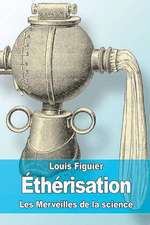Electrical and Instrumentation Safety for Chemical Processes
Editat de R.J. Buscharten Limba Engleză Paperback – 18 mar 2012
Preț: 695.45 lei
Preț vechi: 818.17 lei
-15% Nou
Puncte Express: 1043
Preț estimativ în valută:
133.09€ • 138.44$ • 109.87£
133.09€ • 138.44$ • 109.87£
Carte tipărită la comandă
Livrare economică 15-29 aprilie
Preluare comenzi: 021 569.72.76
Specificații
ISBN-13: 9781468466225
ISBN-10: 1468466224
Pagini: 256
Ilustrații: 256 p.
Dimensiuni: 152 x 229 x 13 mm
Greutate: 0.38 kg
Ediția:1991
Editura: Springer Us
Colecția Springer
Locul publicării:New York, NY, United States
ISBN-10: 1468466224
Pagini: 256
Ilustrații: 256 p.
Dimensiuni: 152 x 229 x 13 mm
Greutate: 0.38 kg
Ediția:1991
Editura: Springer Us
Colecția Springer
Locul publicării:New York, NY, United States
Public țintă
ResearchCuprins
1 Introduction.- General Safety Criteria: Protection of People, Property, and the Community.- Safety Philosophy and Principles.- Electrical and Control System Safety Incidents.- Acronyms and Abbreviations.- 2 Process Units for Electrical and Process Control Safety.- Process Conditions That Influence Safety.- Process Operations.- Plant Layout: Physical Facilities.- 3 Hazardous (Classified) Locations: Area Classification.- National Electrical Code Terminology.- Flammability Characteristics.- Leak and Release Sources.- Ventilation.- Process Conditions.- Vapor Barriers.- Nonelectrical Ignition Sources.- Electrical Classification Practice.- Analytical Approach to Classification.- Electrical Classification versus EPA and Toxicity Requirements.- Reducing Classified Locations.- Division 3.- Probability Concepts: Division 0.- Electrical Classification: Special Cases.- Conclusion.- References.- 4 Electrical Equipment in Class I Locations.- Electrical Facilities Outside Classified Locations.- National Electrical Code.- Explosionproof Apparatus.- Sealing Process-Connected Instrumentation.- Purging and Pressurization.- Advantages of Purging and Pressurization.- Intrinsic Safety.- Oil Immersion.- Conclusion.- References.- 5 Dust Electrical Safety in Chemical-Processing Facilities.- Dust Explosions and Fires.- Electrical Causes of Dust Ignition.- Characteristics of Dust Explosion.- National Electrical Code and Combustible Dusts.- Classification of Dust Locations.- Conclusion.- References.- 6 Electrical Safety in Chemical Processes.- Electrocution and Personnel Safety.- Lightning Protection for Chemical-Process Facilities.- Static Electricity as an Ignition Source.- Protection of Electrical Systems.- Electrical Power Reliability and Quality.- Cable Systems for Chemical-Process Facilities.- Conclusion.- References.- 7 Measurement and Final Control Elements.- Instrumentation Flow Diagrams.- Process Measuring Elements.- Final Control Elements.- Alternating Current Versus Direct Current Drives.- Conclusion.- References.- 8 Process Control Safety.- History of Process Control.- Distributed Control Systems.- Alarm Systems.- Interlock Systems.- Safety Interlock Systems.- Electrical Protection of Control Systems.- Conclusion.- References.- 9 Electrical and Process Control Safety Standards for Chemical Processes.- National Standards Organizations.- International Standards.- Conclusion.- 10 Safety in Maintenance.- Preventive Maintenance.- Design for Maintainability.- Electrical and Process Control System Maintenance Practices.- Surveys and Inspections.- Testing.- References.- 11 Safety in Work Practices.- Electrical and Process Control Safety Work Practices.- Hot Work.- Maintenance in Hazardous (Classified) Locations.- Hot Work in Hazardous (Classified) Locations.- Appendix An Illustrated Guide to Electrical Safety.
Recenzii
[the book] gives an overview of the current state of the art of electrical engineering in this subject area... [it] makes good reading for the uninformed, and there is a lot of general knowledge that will lift the lay person's awareness of what is... a very difficult subject... - The CHemical Engineer; [the book] gives an overview of the current state of the art of electrical engineering in this subject area... [it] makes good reading for the uninformed, and there is a lot of general knowledge that will lift the lay person's awareness of what is... a very difficult subject... - The CHemical Engineer; [the book] gives an overview of the current state of the art of electrical engineering in this subject area... [it] makes good reading for the uninformed, and there is a lot of general knowledge that will lift the lay person's awareness of what is... a very difficult subject... - The CHemical Engineer

















